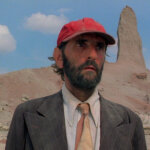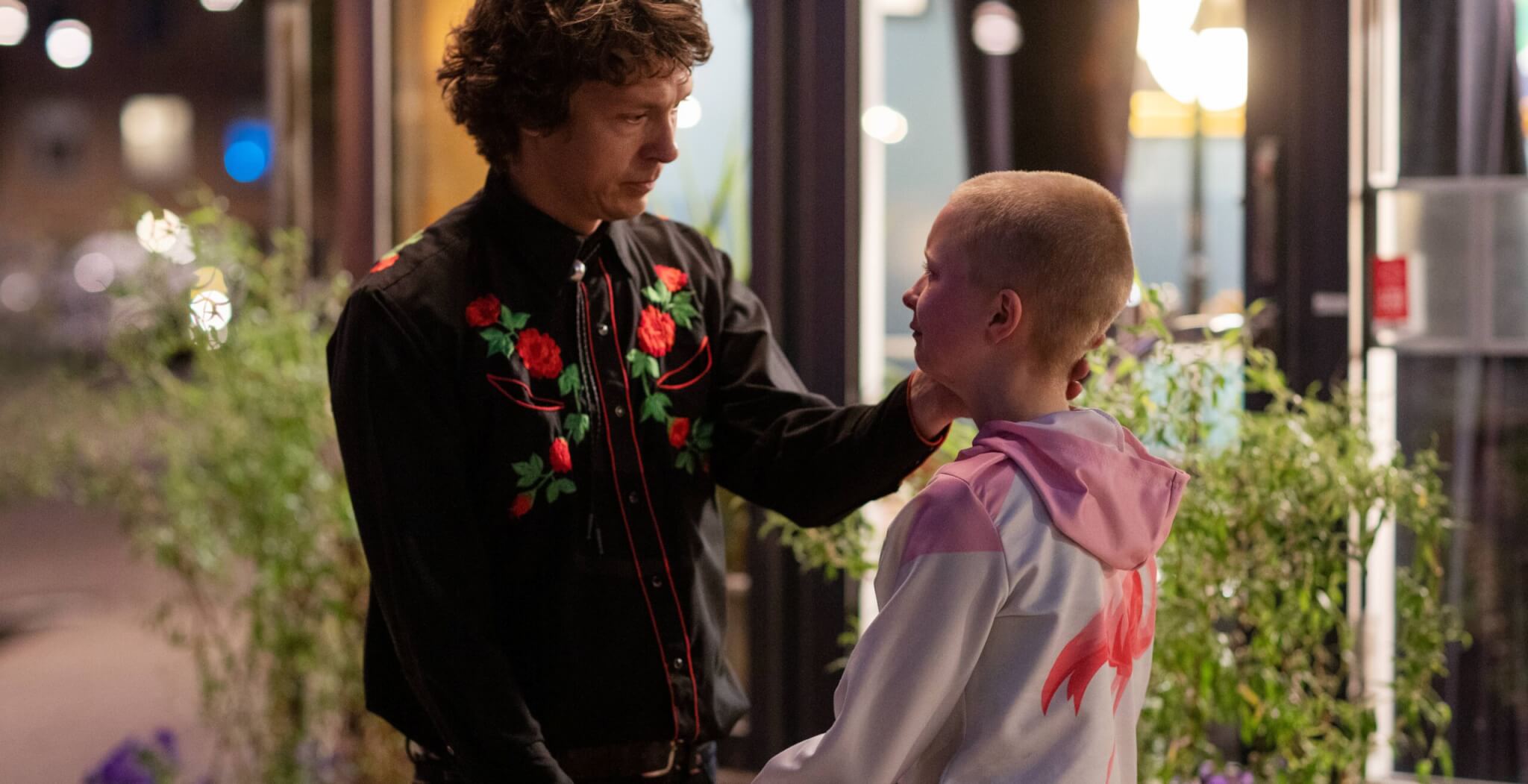Nostalgic and existential, portrayed with a soothing and delicate acting, Wim Wenders’ 1984 Paris, Texas is undoubtedly among the best art-house Western films out there. Among the first elements that come through while watching it is the breathtaking cinematography and art direction: the vast desert landscapes along with the conscious choice of neon lights in urban points make the film aesthetically compelling — and yet, it doesn’t stand out as pretentious or too made-up. I watched this film many years ago, and those images have ever since stayed with me But watching it from more mature eyes, there are many other aspects for which the visual factor is so strong. Namely, the powerful acting and the main character’s journey convey a mesmerising storytelling through the stunning scenography.
We first see the main character, Travis Clay Henderson, played by Harry Dean Stanton, walking through the desert. Although he moves with determination throughout the film, his face transmits pain and somehow innocence too, even though, as we soon realise, he’s been wandering Texas off-the-radar on a psychotic, near borderline state for four years. When his brother Walt, by Dean Stockwell, hears of Travis’ whereabouts, he flights from LA to Texas to pick him up. But he finds out that his brother wouldn’t speak at all, and probably doesn’t know either how he got there.
The film begins and ends with Travis off the road, pointing at two different mental, physical and emotional states mediated by a process of transformation — an aspect that’s essential in road movies — that slowly starts to brew with his encounter with Walt. During the two-and-a-half-hour slow-burner traverse, Travis flocks back to his memories and the causes behind his long-lasting dissociation, and as he sobers up to a fragmented reality, his body and spoken language evolve, pinning his process of transformation. While for the most part of the film Travis’ body and facial language remain his main form of expression, his capacity to speak goes from child-like to highest-level eloquence.
But it is this kind of infantile language that allows his family and viewers to sympathise with him, even though nobody knows what he’s driven him mad. In fact, it is this kind of language that bonds him back to his young son, Hunter, who’d been living with Walt since Travis left. In a scene, Travis picks Hunter up from school but walks on the opposite sidewalk, as Hunter had earlier said that he didn’t want to be seen with Travis. With a road in between and cars parked on each side, Hunter mimics Travis’ playful walk, and the two synchronise in a game that brings them back together — perhaps not in a father-to-son-like relationship, but certainly in one of care and acceptance.
Although Travis never tells Walter what happened between him and his wife Jane, Travis’ reencounter with his family stirs in his memories of his own demons and a raging past. The terrifying, sobering experience leads him to revisit the moment when it all began — the place where his parents met: Paris, Texas. But he realises that it all starts later on, with him, when he falls in love and the overpowering feeling of love takes over his body and mind. He decides to drive with his brother back to Texas and look for Jane. When he finds Jane, employed at a peep show, his jealousy interferes with his ability to show her love, and he copes by drinking himself into a stupor.
That’s how he realises that he will never get rid of the demons that destroyed his family in the first place: jealousy, insecurity and alcoholism, and so he sacrifices his own desire to be reunited with his family. And with this in mind, he tries to make it better — at least for her and their son — by telling Jane where to find Hunter before he goes off the road again.
To return to Texas and its deserts is to return to the place of hell, where Travis had been wandering aimlessly, oblivious even to himself. But as he becomes aware of his past again, the landscape acquires a new meaning, intercepted with images of a violent husband who wakes up drunk, scared and alone in a house in fire.
“He just ran. He ran until the sun came up and he couldn’t run any further. And when the sun went down, he ran again. For five days he ran like this until every sign of man had disappeared,” began to tell Travis to Jane in the peep room — him watching her, her blinded by the reflection of the glass. This monologue, undoubtedly the most memorable scene of the film, is fully static: as in a desert, nothing moves, nothing but Travis’ voice. Perhaps is this juxtaposition between the constant mobility of Travis’ journey and the stillness of deserts — or at least, the idea of deserts as it takes place somewhere in Texas — that makes Wim Wender’s Paris, Texas a film a powerful narrative of subtle meditations on death, time, alienation, aging and mortality.





























